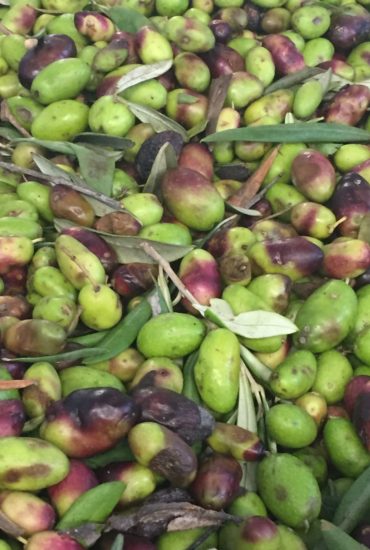I absolutely love this time of year in Italy. Many people don’t even consider November as a possibility but I think this is a big mistake. Of course, if the Amalfi Coast and Capri are on your list, you are best to choose a different time of year. The hotels all shut down on the island and in Portofino between the end of October and the beginning of November. But aside from the fact that you are not basking on the coast, there are so many benefits to visiting Italy in the late fall. The crowds are significantly smaller which is always a plus. It can be grey and drizzly but there is just a good a chance for dazzling bright skies and crisp cool air. And even the grey skies are inviting in their own mysterious way. There is nothing better than a delicious steaming bowl of ribollita with a glass of red wine on a cool afternoon. ’Tis the season for chestnuts, pomegranates, oranges, and artichokes.
But one of my favorite events in November is the olive harvest. There is an excitement and anticipation that permeates the Italian countryside. Centuries old trees are still generously providing fruit that will then become liquid gold, a staple of the Italian diet and a source of income for much of the country. In many regions, the picking of the olives is still done by hand, a very labor intensive operation. Olive farmers call in farmers who are in retirement so they can help with the harvest – in much of Italy it is all still done by hand. In return they are paid in olive oil, a good payment indeed Large tarps are placed underneath the trees and then the olives are removed with large comb-like rakes. As soon as the olives are removed from the trees, time is of the essence because it is essential to avoid the fermentation of the olives which occurs within 48 hours. The tarps of olives are immediately brought to the local mill. Olive oil mills are open 24 hours a day during olive season. There is a festive atmosphere at these mills as the farmers stay and wait for their olives to be pressed. Most mills have a kitchen and there is always a pot of pasta on the stove and a liter of wine on the table. Farmers collect their oil, leaving a portion at the mill as payment for the pressing. In a blink of an eye (or so it seems) the season is over and the mills are closed up again.
Here are 6 facts you may not have known about olive oil:
- only 15% of the olive is oil
- it takes about 20 olives to make one liter of oil
- the region of Puglia produces 40% of Italy’s olive oil.
- olive oil is sensitive to light – this is why it should be stored in dark glass bottles in a cool place.
- olive trees can live up to 2000 years
- Italy exports more olive oil to the USA than any other country in the world.
If you find yourself in Italy in the beginning of November, do take the time to visit an olive farm. It is a unique experience and an essential part of Italian culture.

